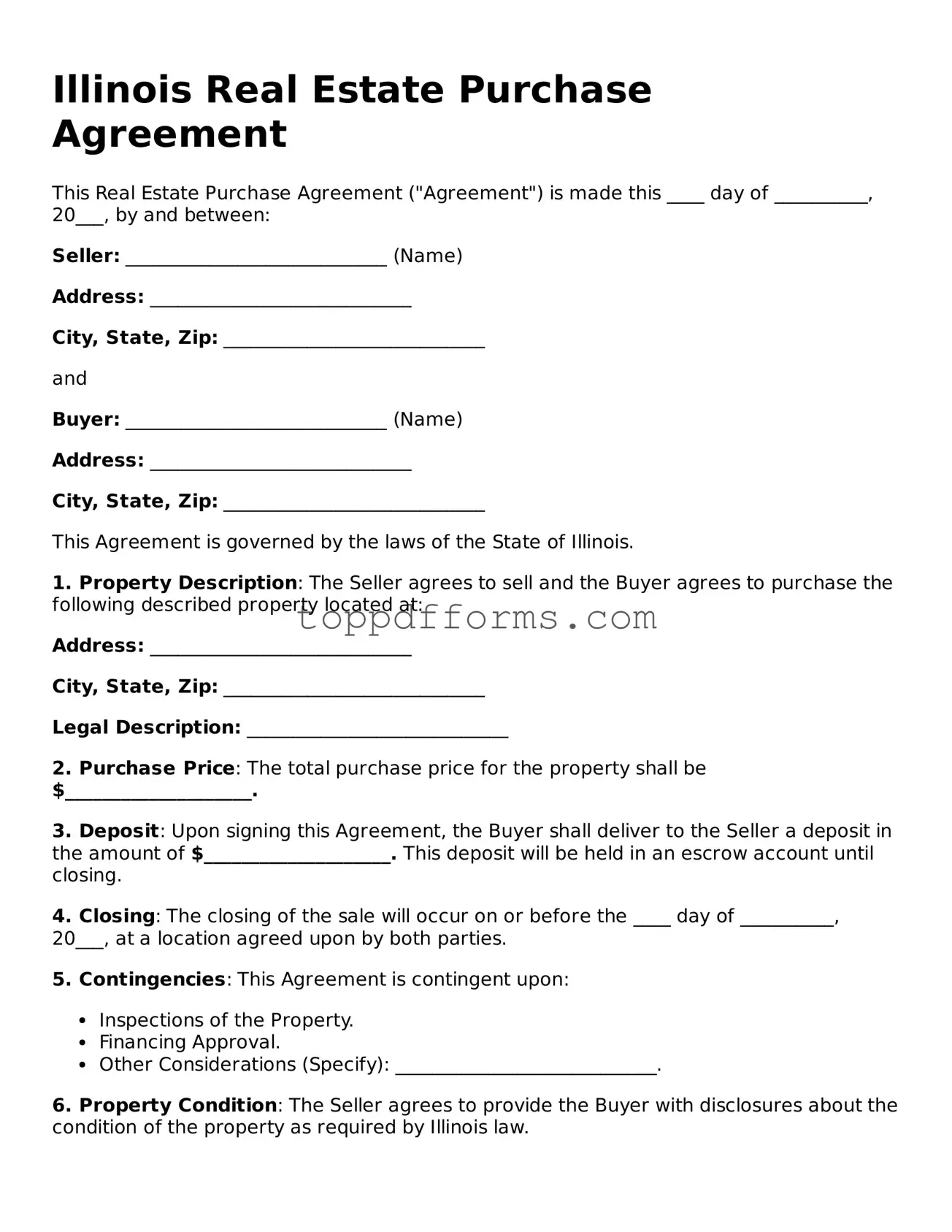What is the Illinois Real Estate Purchase Agreement form?
The Illinois Real Estate Purchase Agreement form is a legal document used when a buyer and seller agree on the sale of real estate in Illinois. This form outlines the terms and conditions of the sale, including the purchase price, closing date, and any contingencies. It serves as a foundation for the transaction, ensuring that both parties are on the same page regarding their obligations and expectations.
Who should use the Illinois Real Estate Purchase Agreement form?
This form is designed for anyone involved in a real estate transaction in Illinois, whether you are a first-time homebuyer, an experienced investor, or a seller looking to transfer property. It is essential for both parties to understand the terms outlined in the agreement to avoid misunderstandings and ensure a smooth transaction.
What key elements are included in the Illinois Real Estate Purchase Agreement?
The agreement typically includes several critical components. These include the names of the buyer and seller, a detailed description of the property, the purchase price, financing details, and any contingencies (such as inspections or appraisals). Additionally, it may specify the closing date and any items included in the sale, such as appliances or fixtures. Each section is important for protecting the interests of both parties.
Can the Illinois Real Estate Purchase Agreement be modified?
Yes, the agreement can be modified, but any changes must be made in writing and agreed upon by both parties. It’s crucial to document any amendments to avoid confusion later. If you need to make adjustments, consider discussing them with your real estate agent or attorney to ensure everything is clear and legally binding.
What happens after the Illinois Real Estate Purchase Agreement is signed?
Once both parties sign the agreement, it becomes legally binding. The next steps typically involve fulfilling any contingencies, such as home inspections or securing financing. After these conditions are met, the transaction moves toward closing, where ownership of the property is officially transferred. It's an exciting time, but it’s essential to stay organized and communicate with all parties involved to ensure a successful closing process.
